#this is inspired by the theatre i work at which is supposedly haunted :)
Explore tagged Tumblr posts
Text
The Literal Phantom of the Opera (DpxDc prompt)
When Cassandra Cain first began taking ballet, her fellow dancers quickly warned her about the ghost haunting the theater.
"He likes to watch us. I see him looking down at the stage from the catwalk all the time."
"It looks like he stole one of the Phantom of the Opera masks last time a tour came through, but its been covered in stars!"
"I heard him when I was acting in Wicked. I was alone in the green room doing some last minute practice and I swear he was humming along while I was singing!"
"It was the phantom who stole my makeup from my dressing room I just know it!"
"Haley from front of house didn't believe he existed until they came backstage to grab supplies for seat repairs. I don't know what they saw, but now they refuse to go backstage."
"That ghost is evil. It pushed me down the stairs to the office and I tore my suit on the railing. Do you know how hard it is to find an all white suit on short notice? I'm lucky it didn't break my ankle!"
"We used to have balconies before the renovations. Sometimes it sounds like someone is moving inside the walls where they used to be."
"I'm not sure that the ghost is fully aware we're performers. A few years ago when Heathers was here, the actress for McNamara said that it felt like someone was hugging her after Lifeboat."
"I've seen him without the mask. His face looks like it was just... shredded. I only saw it once, but I'll never forget that face."
"I heard that he likes to mess with the equipment in the control booth."
Cass isn't sure that the ghost is real, but she is sure that the other dancers think he's real. They often gossip about the theater ghost in hushed whispers, knocking on wood at the very mention of him. Her teachers prefer not to talk about the ghost at all, but they don't deny its existence.
It's not until she is practicing alone on stage and feels eyes on her that she thinks there might be something to the ghost rumors.
#this is inspired by the theatre i work at which is supposedly haunted :)#also inspired by Phantom of the Opera (how has no one done this yet?)#if anyone decides to make a fic of this:#i don't know how backstage and company people interact but i sure as hell know the chaos front of house gets up to#i am more than willing to give you FOH dialogue from personal experience#dpxdc#dpxdc prompt#dpxdc prompts
967 notes
·
View notes
Text
The True Story Behind An American Werewolf In London (1981), And The 9 REAL Werewolves That You Might Bump Into This Full Moon
What makes a horror film a cult classic?
Is it a suspenseful and seriously-addictive plot? Is it iconic characters with quick-witted one liners? Or is it the way the director throws out the old rule book and redefines the genre forever?
An American Werewolf in London (1981) doesn’t score so highly on any of those questions, but despite hitting the big screen amongst a herd of werewolf-inspired movies, it is officially a cult classic.
But why?
With CGI so bad it’ll rival a low-budget episode of Buffy, and with sex scenes so bad it’ll rival a high-budget episode of Buffy, this Yankee doggo wouldn’t need a silver bullet to be floored at the box office these days.

However, when the hum of the theatre-goers melted away into a hush as the opening shot of the Yorkshire Moors back in ‘81, this film was set to terrify the audience.
Jump-scares worthy of Annabelle 36: Yes, This Doll Still Ain’t Dead redefined the genre, with the shockingly realistic transformation scene taking centre stage.
Back in the 1980s, you didn’t see stuff like this.
That’s why to the previous generation An American Werewolf In London is considered one of the most terrifying movies to date. But to me, the real terror doesn’t lie in the engorging snout of the American tourist, nor his every-decaying gap-year bestie.
It’s how realistic this movie is to real werewolves.
Today’s post is all about how accurate the film’s portrayal of the werewolf is to the legends of the beast, and the roll-call of the 9 most famous real werewolves.
Let’s get spooky!
First, Let’s Recap Of An American Werewolf In London (1981)
The horror genre is infamous for many things.
The grotesque violence against women, female characters with less complexity than a box of condoms, and plots thinner than the women cast as final girls.
This film is no different, but it's the latter point that really matters here.
The story starts with two American tourists who decided to spend their Gap Year in England.
Yeah, me neither.
But instead of having an emotional connection with an elephant in India, they stumble into a cosy little pub named The Slaughtered Lamb. Chockful of secretive villagers and satanic imagery - oh, and a vague warning about the full moon - our scene is set.
Basics, they tell ‘em: “Teach english to the primitive villagers all you want, just don’t go on the moors or you will get pregnant and die”
Guess who gets lost and ends up on the moors. What’s that I hear? Mysterious howling that is getting closer to them?

One of the pair - Jack - is attacked first, and is mauled by the wolf-like being. David is attacked too, but the pub-goers shoot it before it has a chance to rip his throat out.
But moments before he passes out from the pain, he does not see a creature. He sees a naked man, instead.
(Dun dun duh)
David wakes up 3 weeks later in a London hospital with no recollection of the attacks, but a policeman fills him in, claiming he was attacked by a lunatic. David’s dead pal Jack then makes the first of his appearances in a kind of ghostly-corpsy form. He lets him know that what attacked them was a werewolf, and that David is now one.
Jack urges David to commit suicide to prevent an attack he cannot control, and to end the curse that makes Jack appear as a ghost that will continue with the existence of the bloodline. During his stint in hospital, he falls for a nurse who he shacks up with when he leaves hospital.
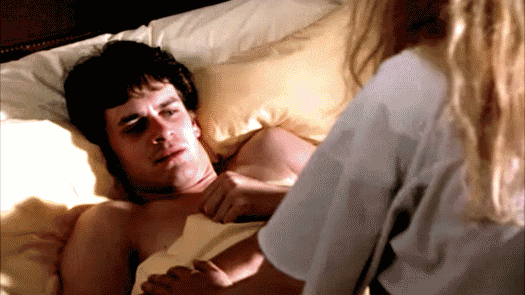
During his first full moon, he stalks the streets of London, slaughtering several in the process. He wakes up in a wolf enclosure at the London Zoo, unharmed by the creatures and with no memory of last night.
Eventually, he begins to piece together the reality of his, uh, werewolf-ness, and attempts to prevent another massacre by getting himself arrested, but he fails. He is drawn into an Adult Cinema by Jack, and meets the ghosts of his other victims who helpfully suggest suicide methods for him to try.
David transforms for the last time, and continues his attack into central London until he is cornered in an alley. His nurse-lover rocks up, and attempts to calm him. For a moment this seems to work, but he is then shot by police and dies.
A sequel did follow up this film, and and sees a similar story set in Paris. The setting isn’t the only difference, however; this time we see an underground werewolf society that’s looking for ways to control the, uh, werewolfness using drugs.
How Accurate Is This To The Legend Of The Werewolf?
Haunted houses, mass murderers, and the creepy details of infamous court cases - it doesn’t take much to justify typing ‘based on a true story’ onto a movie poster.
But the original inspiration behind this film doesn’t just follow one vague story about a vague ghost doing vague ghost things like taking that 10 quid out of your coat pocket even though you spent it on that candle from TK Maxx and are officially in denial that you have a problem it’s not a problem mum it just really rare to find that candle okay these are american imports.
The writer-director, Max Landis, wanted to focus his film on something real, on “something where you really [didn’t] have to suspend disbelief”.
To Landis, Werewolves are an “international” monster, with each individual culture having some man-beast supposedly roam their lands and ravage their communities. He even cited historical cases like in France or in Wales where people were burnt to death for their afflictions, cases that will get their attention later in this post.
So if this film was directly based on the legend of the werewolf, what was the legend of the werewolf?
*Inhale*
A werewolf is a human that can shapeshift into a wolf having been cursed by another, or by an affliction from another werewolf during the night of the full moon.

Then again, tales tell of drinking water from the puddle created by a wolf’s footprint or wearing a fur belt too much that can cause one to become a ‘wolf-man’.
Scientists have debunked claims stretching back as far as 27 AD with a variety of medical causes unexplained in years gone by, from Lycanthropy (a disorder from which one believes they can transform into a wolf) to Werewolf Syndrome (medical conditions which involve excessive hair growth), to Poryphoria which coincidentally is also used to debunk rumours of vampirism. But the widespread belief that once dominated the world suggests supernatural forces could have been at play, too.
In fact, only in the 18th century did official court cases stop referencing werewolves in Bavaria and Austria.
Nevertheless, this hasn’t stopped myths and mysterious stories from still cropping up today.
Historically, werewolves and witches were often closely aligned, whether the wolves were used by witches for their own purposes, or they were ridden by them. Therefore, a link was forged between witchcraft trials and the hunts for the man-wolves.
That being said, it wasn’t just witches they were closely allied with: Germanic tradition might have focused on the former associations, but the Slavic countries considered them closely allied with vampires. This belief in werewolves in Europe - the epicentre of the beastly action - emerged in the 14th century, and peaked in 16th century france.
This is where the first link between the historical cases of wolf-men and the movie emerge. If the number of werewolf cases grew during one era, this can point to 2 things: that rumours of werewolves fuelled more rumours, or that werewolves were real and thus spreading the curse.
So, when Jack appears as a corpsey-ghosty-being-thing and tells him that the werewolf bloodline needs to end with him, the film conforms to werewolf legends.
Specifically, werewolves were considered to have a variety of give-away traits whether transformed or as a human: unibrows, curled fingernails, low-set ears, and a certain swagger were dead giveaways for werewolves in their human guise.
Or, when in wolf form, it will bear characteristics such as not having a tail, bearing human eyes and speaking with a human voice. So yes, that scene in Twilight is an accurate depiction of a werewolf.

But aside from David looking like a wolf during his transformation, one of the key similarities between historic cases and the film is the post-transformation effects:
Having returned to human form, werewolves are often weak and completely debilitated. In fact, severe depressions are often mentioned, too, something that must become pretty annoying if its every 4 weeks.
Remember when David was in that coma for 3 weeks?
Remember when the ghosts lectured him on suicide methods?
Speaking of folklore mirroring the film, remember the totally-not-creepily-named pub? Ah yes, The Slaughtered Lamb:
The five-pointed star was enough satanic imagery to suggest a divine link to the werewolf that isn’t explored in the movie, but historically curses from gods, saints, and the devil are mentioned. The latter is specifically true for Russia, suggesting this werewolf might be fresh from Mother Russia.
Oh, and of course, witches supposedly did deals with the devil, suggesting a witchy-satany-link that explains the decor of the pub.
Given their warnings of a full moon and a desire to protect the young men from their original forays onto the moors, it suggests the decor was put in place as a protection against the supernatural forces haunting the area, or maybe even a deal with the forces to protect the pub or village itself.

The penultimate parallel is the OG attack itself.
The policeman claims David and Jack were attacked by a lunatic. And if you check out this post on the full moon, you’ll know how well this fits the concept of the werewolf.
The final key similarity is this:
The Ancient Greeks and Romans believed in the power of exhaustion to cure people of werewolf, uh, -ism. The captured victims would be subjected to unruly levels of physical exertion in the hope that it would drive the beast from the body.
We discover in the second film that the actual ‘cure’ is adrenaline. By engaging in activities which encourage enough adrenaline to rush through the body, the beast can be kept at bay.
This is confirmed by the concept of killing a werewolf in the first film: when the werewolves are shot, they immediately return to human form.
Quick flashback to GCSE biology, ‘couple dots connected, and here we are.
The 9 Real Werewolves That Have Existed Throughout History And Might Still Exist Today
So - we know that An American Werewolf In London is pretty-gosh-darn-accurate to the legend of the mythical beast that is the werewolf.
But it’s not like werewolves actually exist, do they?
Do they?!
#1 - Pierre Burgot (1502)
The 16th century was a pretty shite time to be alive. If you weren’t dying in childbirth, you were being beheaded for adultery, you dirty b*tch.

Pierre Burgot was facing such a predicament, but his was slightly more furry. Whilst tending his sheep like most french farmers, three men on horseback rocked up and asked him if he’d like to renounce god and follow them, instead. With the promise of protected sheep, he accepted, and was later turned into a wolf as a part of the contract.
Then, in true devil-worshipper-werewolf fashion they terrorised the region, willingly becoming wolves to kill, pillage, and eat innocent civilians.
When Burgot was eventually attacked during a quick snack, he was discovered in human form, mirroring the movie titling this post.
#2 - Giles Garnier (1573)
A hermit concealed in the woods who may or may not turn into a wolf is a pretty common tale still cropping up today, but back in the 16th century, this was more popular than ever.
With a taste for childrens, he began to pick off and partially devour young locals. The villagers’ proof of his attacks, however, did not simply come from pinning the attacks on a recluse:
They saw a wolf maul a young boy and followed it to see it transform back into a human form - the human form of Giles Garnier.
Garnier even confessed to his shapeshifting-situation.
#3 - Perrenette Gandillon (1598)
A 15 year old boy was livin’ his best Middle Ages life when he saw a wolf lunge at his sister. With its human hands it grabbed her and killed her, then switching its attention to him.
It might have left deep wounds, and he might have died days later, but the boy had just enough time left to cough up a brief description of the hairy hands he saw grab his younger sister - and the scar gracing the wolf’s body.
From here the villagers led a mob to the house of Perrenette Gandillon, a woman who bore the same scar. This was actually a very common way to deduce a werewolf back to its human form. The thing is, they then worked out that it wasn’t just her who was getting wolfy.
Her whole family had actually been spotted in beast-mode, something they later each confessed to.
(They were even believed to pace on all fours in their prison cells.)
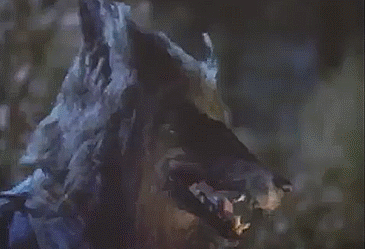
#4 - Jacques Roulet (1598)
This is the ultimate werewolf story, bringing together an ostracised member of a community and family relations that would make Christmas dinner more awkward than my UKIP aunt naming dropping Jacob Rees-Mogg.
When a young boy was found mutilated and two wolves seen, they were hunted down until a man dressed in rags and in a daze emerged from the darkness.
Jacques Roulet was his name; slaughtering innocent children was his game.
It is believed that he and his amigos had been given their powers by the devil himself, and the eventual confession of these amigos supported this claim.
#5 - Peter Stubbe (1582)
Whispers of werewolves have littered court records and conjured up local legends for centuries, but there are some people that stand out from the crowd - this is one of those werewolves.
Peter Stubbe was a well-off farmer who made his name in the community. Unfortunately, how we remember him is different to his community. Supposedly, Stubbe made a pact with the devil, requesting that “at his pleasure he might work his malice on men, women, and children, in the shape of some beast”.
His pact resulted in a murder spree spanning 25 years. By the time he was supposedly discovered as the culprit of the murders haunting Bedburg, he was described as devoid of humanity during his time as a wolf, and he had no memory of his actions once returned to his human form.
#6 - The Beast of Gevaudan (1764)
Our story starts in 1764, when the residents of Gévaudan started noticing people were dying. Sure, it’s nothing new for 250 years ago, but when their throats were consistently being ripped out, concerns were raised.
With 210 attacks being blamed on these legendary man-eating animals or wolf-dog hybrid, this became a myth all too real for the inhabitants of the area. Lone men, women and children near livestock were the victims of these attacks, suggesting a totally normal beast attack, right?
But when they discovered that only the necks were being targeted, this pointed to much more mythical roots, explaining why we consider this one of the most prominent potential sightings of a werewolf to date.

#7 - The Livonian Werewolf (17th century)
You’d think werewolves would be mysterious marvels of nature, rarely divulging the realities of their lives, right? This guy bucked the trend.
Thiess of Kaltenbrun was a typical Swedish bloke who spent his time practicing folk magic, wearing fur pelts, and becoming a wolf. Widely known to be a werewolf - despite being in his 80s - the authorities brought him in for questioning on an unrelated matter. From there he spilled on his specialist lifestyle.
He claimed he and others of his kind would only change on certain days like Pentecost or Midsummer Night by throwing on a wolf pelt, a common method of becoming the mystical being.
He also claimed that they would kill and ‘gather’ meat in wolfy form, but cook it in human terms.
Yet the most peculiar point he made was that werewolves were not demonic creatures, but were agents of god. Werewolves would spend their free time travelling to hell to battle the devil and the witches, and bring back the livestock they had stolen, contradicting all other tales we have seen so far.
#8 - The Southend Werewolf (1952)
William Ramsay was only 9 years old when it first happened. One day, he suddenly felt an icy shiver take over his body, a smell like rotting meat float around him, and an aggression overcome his mind. He was shivering, he was growling, he was in-tune to his senses.
He had - or so he claimed - become a werewolf.
He then finished up his transformation by ripping a fence post out of his garden. Super-human strength was often reported whenever this would overcome him, confirming that all these signs bear a similarity to cases of demonic possession.
Other events of turning into a werewolf bear similar resemblance, including him attempting to attack and kidnap a prostitute and biting doctors attempting to restrain him. After every event, Ramsay would fail to remember the attacks.
He even checked himself into a mental hospital in an attempt to get to the bottom of his affliction in the 1980s. They found no explanation for these events.
And it was following these similar cases of him ‘turning’ - including one that involved the police and splashed his story across the papers - that the Warrens decided to pay him a visit whilst in London. They deduced that this was a Demon Animal Spirit. Having been suspicious of his claims prior to their investigation, they then claimed an exorcism was required. So, Ramsay was flown out to the USA, and an exorcism performed by Bishop McKenna occurred.
At first, the exorcism did fuck all. But it was only when the bishop touched his forward and asked the demon to reveal itself that Ramsay once again began to turn. That was the final time that Ramsay ever became a werewolf.

#9 - A Mysterious Beast Is Killed In Montana (2018)
Strange and unknown creatures are always being killed, captured, and caught on camera. But with the ‘hoax’ label stamped firmly on most of these cases, they often go disregarded. This is not one of the cases.
In May 2018, deep in rural Montana, a creature was shot dead by a rancher. Cloaked in long, grey fur, bearing huge claws and an oversized head, this was no ratified beast.
The authorities had no clue what it was.
The teeth and paws were too short to belong to a wolf, and the floppy ears and fur did not point to a doggo, either.
Do You Think Werewolves Exist?
If you liked hearing ‘bout werewolves, I’m sure you’ll love to hear a new ghost story everyday, right?
Tap follow to see a new one in your feed on-the-daily!

#an american werewolf in london#an american werewolf in paris#werewolf#full moon#astrology#beastmode#female were#werewolf sightings#vampire werewolf#twilight#jacob black#team jacob#Horror Movies#best horror movies#the twilight saga#scary werewolf#white werewolf#full moon werewolf#real life werewolf#real life ghost stories#lycan werewolf#werewolf moon#famous werewolves#bill ramsey werewolf#Ed and Lorraine Warren#peter stubbe#werewolf film#american werewolf#an american werewolf#a werewolf in london
24 notes
·
View notes
Text
The Blair Witch Project & Beyond: The Increasing Laziness of Found Footage Films.

The ‘Found Footage’ method of storytelling has been around for a good while now; dating back to, you guessed it the 19th century with novels such as Frankenstein and Dracula (there will come a day when I don’t mention Dracula in an essay on horror, but apparently today is not that day). These novels were often written in a diary format, or composed of letters that have been compiled by the author.
The Blair Witch Project is perhaps the most famous film in the medium, due to its being a cultural phenomenon back in 1999 when it was first released, and it was the first big success of a film of its nature. And is still notirous to this day, having a few of the most famous words in horror history:
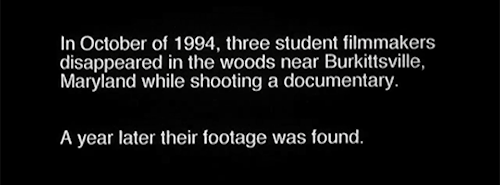
Although many may think that it was the first of its kind, the found footage format of filmmaking has its roots in 1980 with the release of “one of the most controversial films ever made”, Ruggero Deodato’s Cannibal Holocaust. The film follows an anthropologist on a rescue mission to find a film crew who venture into the Amazon to film indigenous tribes. Monroe, the anthropologist, finds the footage the dead crew shot, and it is presented as if we are watching it as Monroe is. Now, I will admit by description is rather vague as I did attempt to watch the film, but I honestly couldn’t make it through because there are scenes that are just too graphic for me.
The film has perhaps the most extensive disclaimer I have ever seen:
“The following motion picture contains intense scenes of extreme violence and cruelty. As distributors of this film, we wish to state with absolute sincerity that by no means do we condone the artistic decisions employed by the makers of this film. However, as firm believers in the constitutional right of free speech, we do not believe in censorship.
Therefore, we are presenting Cannibal Holocaust for the very first time in its uncut uncensored original form, with all sequences photographed by the filmmakers however offensive and repugnant, presented fully intact. What you will see will definitely shock and offend you. Nonetheless, it should be viewed as a disturbing historical document of a bygone era of extreme irresponsibility which no longer exists and hopefully with never exist again”
Initially the phrase ‘definitely shock and offend you’ did make me scoff, because I honestly thought that a horror film made in 1980 would be a walk in the park. Boy, was I wrong. Do yourself a favour and just don’t bother watching this film. I can handle pretty much anything, but this film contains scenes of violent rape and murder, and live killing of animals. It is honestly not worth it, as the reast of the film isn’t that great, the acting is pretty terrible.
Anyway, back to it. Cannibal Holocaust was such a controversial release at the time, because of the sheer explicitness of the film, and because everyone thought it was real. So real that the director was arrested on charges of obscenity and then murder, as the director told the actors to go into hiding a year after the film was released to create authenticity, as soon as the actors resurfaced to give testimony, the charges were dropped, but he was still fined for charges of animal cruelty.
Before The Blair Witch Project there were only eight films of its kind made, after it’s release in 1999, there have been around 150, that’s 150 in the space of nearly 20 years. What made The Blair Witch Project so successful that is inspired so many more filmmakers to create similar found footage films?
This notion of the authenticity of found footage films is perhaps its biggest draw and the most masterful example of creating an authentic narrative is The Blair Witch Project. The films genesis lies in 1993 when the directors Eduardo Sánchez and Daniel Myrick discovered that some paranormal investigative documentaries were often scarier than fictional horror films, and got to work on the film, initially creating the mythology that would be the basis for the ‘documentary’.

Set in Burkettsville, Maryland, formerly ‘Blair’ the mythology is based on a witch who was murdered by the townspeople, her spirit supposedly continues to haunt the woods surrounding the town, causing the deaths of numerous people from the town.
Heather, Josh and Mike, the three students featured in the film set out to the woods to film a documentary about the Blair Witch, after two days they get lost in the woods leading to them supposedly dying at the hands of the witch, however the ending is left purposefully ambiguous, showing no deaths on screen. However, the events that occur in the last 10 minutes suggest the death of the filmmakers, due to our knowledge of the mythology of the witch.
This mythology is fleshed out even more in the mockumentary that was made by Sánchez and Myrick, and subsequently premiered on the Sci-Fi channel before the film was due to be released. The mockumentary delves deep into the story of the witch, but also contains interviews with the missing student’s family and friends. If this wasn’t enough, there was also a website made providing all these details, with even more pictures of the evidence found with the footage shown in the film, therefore, “The Blair Witch Project does not begin and end with the theatre release; the film is a piece of a broader narrative” (Keller, 72). The website and documentary were so successful that an ex Maryland police officer offered to help in the search for the lost students. Which was only exemplified by the actors being listed as deceased on IMDB.

With the mythology set, the authenticity of the film does not stop there. The shoot in the woods lasted eight days, in which the three actors were pretty much left to their own devices. There was no script written for the film, just a guideline of the basic narrative. Each day the actors would leave the film rolls in a set location found of the GPS by the rest of the crew, and they would be left with food and very small amounts of direction.
Myrick the co-director describes the film as “not like a normal film: the actors would work the cameras, film each other all the time” they only intervened if they felt they needed to tone it down and when they needed to create the nighttime scenes in which they would shake the tent make creepy noises. Keller suggests that “within the semiotics of the film, the same unstrady images that reveal the presence of the camera also suggests ‘reality television’, a genre of film that lacks the polish of cinematic realism, but signifies the authenticity of the events depicted” (74).
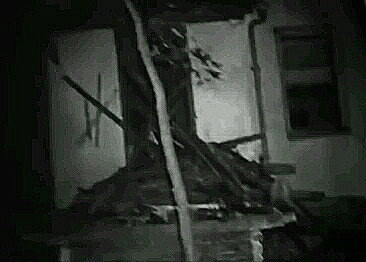
The aftermath of all this hard work, left cinema viewers stunned by the film, and had them asking, was it all real? It must be there was so much evidence to suggest so, back in the day, if there were official websites on the internet, then it must be true. However nowadays we have learned our lesson and try not to believe everything we see online.
For me, I watched the film not really believing it was true, but it’s the notion that it might be legitimate that makes the experience so exciting when watching it for the first time. It’s all part of the experience and is a large factor in its success with audiences. Sadly, in 2018, when you do your research, it is very clear it was a fabrication; made all clearer by the sequel Blair Witch released in 2016…but we shall get back to that.
In the (nearly) 20 years since The Blair Witch Project, there have been a plethora of found footage movies, most are horror films, the odd one goes into the realms of science fiction, superhero films and even comedy. Arguably the most famous/successful are films such as Paranormal Activity, [REC] and Cloverfield.
Paranormal Activity kept the tradition of The Blair Witch Project alive by pushing the idea that the footage found features the deceased and could potentially be showing real life events. Cloverfield does suggest this, but the thing that draws the viewer away from the feeling of ‘real life events’ when a giant monster starts crashing through New York, which, we as viewers obviously know did not happen. I am not critiquing Cloverfield at all, as it is simply taking the genre further by exploring different narratives. Paranormal Activity however, I will nitpick (even though I love it).
Paranormal Activity begins like The Blair Witch Project with a disclaimer:
“Paramount pictures would like to thank the families of Micah Sloat and Katie Featherson and the San Diego Police Department”
From the beginning of the film, you expect a Blair Witch Project-esque film, which in some respects, it is, and does it relatively well. However, my issue lies with the lack of effort that is made to make the events seem as ‘real’ as possible. There is little background information relating to apparent events I mean, it would have been cool to list the actors as dead. But I guess the internet must be to blame for this, we are so god at squeezing out information that it would probably seem like a cheap marketing trick to attempt what Blair Witch Project The did.
But, I mean sometimes, they didn’t even try. Like it was common knowledge that there were multiple endings…which makes no sense if it was a ‘found footage’ film. How can they die in two different ways? It immediately takes you out of the ‘real’ world of the film.
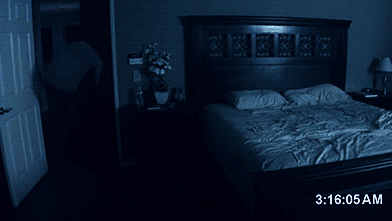
Sequels are also a glaringly obvious issue with attempting to carry on the façade. A mere three years after the original film, Paranormal Activity 2 was released. Now, the illusion is broken well and truly, because we then question the chances of someone else connected to filming the events that are linked to the original film; and lemme tell you the far-fetched narratives that are in place so that they can have the excuse of calling it found footage. The first made sense, the second was a bit of a stretch, the third, a little bit more so apart from the fact that they had to change the VHS tapes every, like 8 hours or something silly, the fourth again, is a massive stretch. But, I mean they are still quite scary, one moment in the third one made me well up it creeped me out so much, so I guess they did the job there. I could write so much more about the Paranormal Activity films, that’s for another time, perhaps...
I mentioned the 2016 sequel to The Blair Witch Project, simply entitled Blair Witch earlier. Now, I was legitimately excited for this, I thought, hey, what could go wrong. They could perhaps learn from how great the first film was … but alas, it was not to be. Blair Witch follows Heather’s brother, 20 years after her disappearance. He heads off into the same woods to see if he can find her, because he is convinced that she is still alive in the house. He has a bigger camera crew and has two weirdo locals with him as well.
Now my first big gripe was that the camera continuation was completely off, but I now know that the crew have camera earpieces… which I didn’t even notice, but surely if it was on your ear, like your cheek would get massively in the way.
For me the film failed to capture the sense of desperation that flows through the original. It was down to complete laziness from the directors, to even make it seem the slightest bit authentic. The ear piece cameras and the GoPro are so unbelievably HD and graded, the script is just terrible, the actors are equally bad. You can tell that they had a film crew with them the whole time. Also…they didn’t even bother to shoot it in the same location as the original, it is glaringly obvious that the terrain is in a completely different country.
So we have this:

Versus this:

Another massive break from the original was that they showed the damn witch and added to the narrative of what happens to you when you encounter her. The mystery has totally ruined and feels a lot more fabricated because elements of the supernatural are shown on the footage.
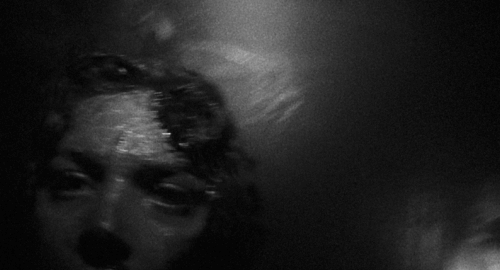
...... ugh.
What annoys me most is that they had so much time to think it through and create something that, wasn’t exactly the same (because that would be pointless), but carried on the legacy rather than being tremendously lazy. I mean, the budget for Blair Witch was $5 million in comparison to the modest $60,000 that the original film had. You can see the budget all over the new film, it just looks far too flashy and is another in a long like of below par found footage movies, I mean, they even had a full on premier with all the actors, there was no effort to even let the audience pretend to believe it was real. And to be honest its link to the original just places the original further into fiction.
Most modern found footage films have gone down the route that Blair Witch did, films like As Above, So Below being one of them, which contains so much supernatural stuff that it is so unbeleivable. The biggest rule in this type of horror, for me is don’t show, dont even tell, just leave it to our imaginations, becuse often that is the scariest thing.
By Siobhan Eardley.
Works Cited:
Deodato, Ruggero. (Dir). Cannibal Holocaust (1980).[YouTube].
Hoad, Phil. “How We Made The Blair Witch Project.” The Guardian, Guardian News and Media, 21 May 2018. Web.
Keller, James. “‘Nothing That Is Not There, and the Nothing That Is’: Language and The Blair Witch Phenomenon.” Studies in Popular Culture, vol. 22, no. 3, Apr. 2000. Web.
Peli, Oren. (Dir). Paranormal Activity (2007).[Netflix].
Rose, Steve. “Cannibal Holocaust: 'Keep Filming! Kill More People!'.” The Guardian, Guardian News and Media, 15 Sept. 2011, www.theguardian.com/film/2011/sep/15/cannibal-holocaust.
Sánchez, Eduardo and Daniel Myrick. (Director). Curse of the Blair Witch (1999). [DVD].
Sánchez, Eduardo and Daniel Myrick. (Dir). The Blair Witch Project (1999). [DVD].
Wingard, Adam. (Dir). Blair Witch (2016) [Netflx].
#horror#blog#The Blair Witch Project#film#Paranormal Activity#Horror Film#blogger#film blog#found footage#Blair Witch#Blair Witch 2016#writing#essay#curse of the blair witch#[REC]#Cloverfield#found footage film#horror blog#paranormal#creepy#paranormal film#uk blogger#films#horror genre
124 notes
·
View notes
Text
Justice League & The DCEU
Accepting that I’m in the minority. What I’ve loved about the DC universe is the dark tales. The tales of earth in jeopardy, heroes who’ve turned evil, Villains to heroes. Stories like Superman:Red Son that suppose the hero crash landed in Russia, not Kansas, and how that affected the way Kal-El would turn out. Stories like The Dark Knight Returns (no, not like the film in-name-only) where our vigilante ‘hero’ who tries retirement from being Batman is haunted by his choice. Plagued by the choice,even. Realizing that the costume he wears is really Bruce Wayne, not The caped crusader, and the consequences he faces returning to Gotham as an older man fighting a new war. There’s ‘Kingdom Come’, a dystopian tale of the Justice League that has our heroes battling their offspring, relatives and protégés , resulting in an all out war that engulfs all nations and nearly destroys earth. ‘Flashpoint’, a dark story that has The Flash doing his best to get back to the point in time where he feels he can make the difference and what his past choices have led to...a place where his friends are now enemies with each other hellbent on mutual destruction. Batman, again, in ‘The killing Joke’, battles Joker to near death. Realizing that if he would kill the clown villain that he may be without true purpose. There’s more...but, often, these stories are considered to be DC comics best tales. They’ve been reprinted, they’ve been retold. They’ve been loosely adapted to live action film which ultimately watered down the initial idea of the art. The stories have been animated and they’ve been sequelized and retold again and again on pages. Even though these stories were told as a reaction to the original tales of these heroes, from a golden era where battling Nazis and bank robbers inspired hope to the readers, the titles I’ve mentioned are known as DCs best sellers. The reason why DC became a powerhouse publisher. The numbers are there. I’m sure someone, somewhere is recalling when Superman stopped a train from running over a dog, or when Wonder Woman helped a lost child reunite with a family, or when Aquaman helped clean up an area of an ocean. Maybe someone can recall when The Flash was fast enough to slow down a speeding car from running a red light and causing an accident. I’m sure. But, whoever you are out there ...you’re in the minority of sales. Sales are votes. I know that the primary idea was that heroes should inspire and that these stories helped build into that mythology. The stories laid the groundwork for other legends like ‘TDKR’ or ‘Kingdom Come’ to happen. Yet, when these dark stories emerged from print, they crushed it with mega sales across the planet. Somehow, when adapted to the silver screen, that caused distress among an audiences everywhere. I didn’t get it. Just like ...I don’t think McDonalds makes the worlds best hamburger...yet, there it is. The planets best selling hamburger. I disagree with that opinion but the sales dwarf whatever the hell my thoughts are. I don’t piss and moan much about it as I’ve accepted that people want their shit hot and fast so they can take a fast hot shit. Meanwhile, I’m over at Holy Chuck and baby...that’s a hamburger ! So, when people bitched and moaned about Man Of Steel being too dark, that their Superman doesn’t kill, I thought to myself ‘Which Superman would that be?’ When BvS came out and people gripes about Batman ‘Not being a killer’ or ‘Superman’ isn’t supposed to be moody’ I wondered to myself ‘Which story are they complaining about?’ Batman kills lots in TDKR. Superman self exiles himself in Kingdom Come and is super moody. Wonder Woman is practically militant in Kingdom Come. These are DCs best selling stories. Sadly, instead of translating these mighty tales to film, they’ve been adapted and then relayed to some wonky, stock holding round table of asshats who chose to say shit like ‘too dark’ and ‘not enough light’ and even worse ‘not funny enough’ Before I leave the impression that I think the DCEU is flawless I’ll inject and digress towards my opinions ...loved Man Of Steel. Easily the best Superman I’ve seen on film and it’s a gorgeous looking movie. BvS has moments of awesome mixed with moments of true diarrhea and that’s because many, especially the audience that voted with dollars, had this screwed up reaction suggesting that ‘Superman was too dark’. He’s an alien on Earth ...alone and one of the last of his species. Affleck completely rocked it as Batman. Not one scene prior to Ben in the warehouse comes close to that type of awesome. When he’s training in that film we could believe that this Batman kicks ass. We also finally see Bruce as a detective and technician within the bat cave. He nailed it as Bruce. But, that death thing doe. I could talk all day about the terrible casting for Luthor and the unnecessary addition of Doomsday. I’m on that team. Then, because BvS undelivered at the box office despite the $1billion it generated, Suicide Squad came at us like a bullet of spit. We’ll never know the actual film that director intended us all to see because the studio got cold feet when they saw the dailies, suggesting the film was ‘too dark’ despite the title of the film ...wait for it ... “Suicide Squad” and what that meant. None of them were supposed to live but hey...marketing could’ve gone with ‘Almost Suicidal Squad’. Could’ve worked, maybe? Then ‘Wonder Woman’ happened and the studio and audience did a collective sigh because it brought in the big dollars which means it worked on a level that shareholders and audience members could agree upon. I liked WW but it’s far from perfect. Where the hell did that laser beam come from at the climax ? Diana shoots lasers?! Now, on the eve of the release of ‘Justice League’ all reviews point to ‘fun’ and ‘great jokes’ with ‘not too dark, like MoS or BvS’ and I’m over here scratching my head apart. Which stories were they reading ?! The stories that sold less than half of TDKR ? Or ‘Flashpoint’ ?! Marvel films are transforming into parody, popcorn fodder, and very little discussion happens after that. For example, I’m sure that no one is going to be talking about Guardians 2 the way that people were talking about Guardians1 except for ‘not as good’. Thor:Ragnarok was fun, fast paced and had me laughing out loud a bit but it won’t be this memorable film that I’ll want to replay years from now. In fact, most of the new Marvel films have a disposable feel where I never feel anything is at stake really...just stuff happening without any true resolve. Maybe that’s why I’m so hopeful for the upcoming Infinity War because Thanos kills everyone in the Marvel Universe. Sorry...spoiler alert ? Mostly, it’s this ...when I watch a DC movie I want to see the dark. That’s why I go !!! I want to to reflect and have thoughts and discuss with my friends who or what or when could be different. The change. The twist. I do not hope for my DC films to be like Marvel. But, with regards to Marvel, I mostly just hope for Thanos to kill everything just so we can all move on to something else. We need alternative. That breeds new stuff and new stuff is cool. That’s why these dystopian and dark messed up stories were so badass to begin with. Because they offered us, the readers and potential theatre audience, the opportunity to see ‘what if’. Yes, I know Marvel printed that stuff first and yea I was a fan of their tales. But, no one ever really dies in Marvel, do they. Or DC...they’re guilty too. That’s why the publishers printed these What If stories to begin with ! Otherwise it’s onwards towards the never ending. This type of shit removes the stakes at hand. That’s why the dark ‘what if’ stuff is awesome ...it follows through. It ends things and allows new shit to start. Otherwise we see Magneto die, again. We see Lex Luthor go to prison, again. Do you think Batman might capture the joker, again? How about Wolverine...will he escape the treacherous mutant bad guy...again? I got chubbed when Marvel announced Wolverines death. But, wouldn’t you know it...he’s back. So is Magneto. So is Lex. Pretty sure The Joker is murdering someone with laughing gas and laughing about it. Shocker, isn’t it? A lot of people will take a dump on the film makings of Snyder and what he tried to do with the DCEU. For all the stuff he tried that didn’t work, and some of it didn’t for me too, he def tried to do something different than what was done before his efforts. His reward was getting heaps of po0p thrown at him by keyboard warriors seeking a McDonalds hamburger. These same viewers who reward ‘same, same again’ and fuel the stockholders to sequelize and trilogize stories that we’ve loved at first into this endless, stakes free world, where nothing changes. It’s all safe and they’ll see you soontimes, even if they have to recast. But, get excited cuz this time they’ve got XYZ director at the helm. He’s supposedly got more influence than the shareholders and the board of boredom, donchaknow. I am super excited about seeing Justice League because I’m a slut nerd for comics to film, an admitted sorry ass zombie slave, hypnotized to sleep walk over to the box office regardless of who or what is directing or starring. For example, Taika Waititi didn’t put my ass into a chair. It’s not a perfect hypnosis ...I skipped seeing Suicide Squad in the theatres, I passed over Spider Man:Homecoming and I won’t be seeing Ant Man 2: Ant Harder. I really saw Thor 3 for The Hulk and the wondering of how badly they screwed over the ‘Planet Hulk’ storyline but Thor’s triceps looked huge and the first three times he failed was funny. The 20 times after that not so much. Anyways, the initial tracking after opening weekend for MoS fared shittily for the rest of what could have been the DCEU and sadly we won’t be seeing the ‘what if’s’ and instead we are getting served the ‘you knew it !’ versions of these movies. Also, a studio and round table so desperate to catch up to the financials of their competitors that instead of doing their bestest to tell great stories that they did for us on the page, they’re serving us some McDonalds hamburgers. Enjoy the super size. It’s only an additional buck more.
#justice league#dceu#superman#batman#wonder woman#aquaman#flash#cyborg#zack snyder#joss whedon#warner bros
1 note
·
View note
Text
Golem Dramaturgy: Richard Waring @ Edfringe 2017
Richard Waring presents
Golem
When we feel powerless, we create monsters - and then?
Sweet Grassmarket
August 21-26, 8.20pm, £10 (£8 concessions)
A funny, moving and haunting one-man show retelling the Jewish folktale that inspired Frankenstein is to run during the final week of the Edinburgh Fringe at Sweet Grassmarket.
What was the inspiration for this performance?
A friend of mine reminded me that even at University I was talking about the Golem story. The monster story is an archetype story that we revisit again and again: Frankenstein, Robocop, Terminator etc; and the Golem is an example of a really early “monster story”.
I was also really interested with the rise in power of fanatical men with beards. I have read a number of interviews with such men and with people who know them, and they so often are reported as friendly and charming – “a nice bloke”. I thought the Golem story was a great metaphor to explore these ideas.
Is performance still a good space for the public discussion of ideas?
There is always something dangerous and exciting about live performance. It can be a very personal experience and there is nothing that can replace it. Of course it’s still a good space to discuss and challenge ideas.
How did you become interested in making performance?
I love the risk and fear of performing - the fact that it’s in the moment and it’s live! I think this is why theatre is still so popular. My movement teacher at drama school was Leqoc trained and this has really influenced me. (Nearly 40 years later I am still in touch with him).
My first job after leaving drama school was with Ken Campbell in The Warp (then in the Guinness Book of records for the longest show - 22 hours). After that I worked with a number of experimental performance art companies like Rational Theatre and Loose Change with Tessa Schneidermann as well as companies like Birmingham Rep, Paines Plough and the wonderful Deal Theatre Project.
I have done a lot of work with young performers and love watching them find their confidence and be supposed at their own hidden abilities.
Is there any particular approach to the making of the show?
Have fun
Be truthful
Does the show fit with your usual productions?
I don’t think I have a “usual” production – at least I hope not. I co-directed Tartuffe also at this year’s Fringe, come see that and Golem and then you can judge.
What do you hope that the audience will experience?
A friend came to see a preview performance of the show. She said this: “I expected to admire it, I expected to appreciate it, but I hadn’t expected to enjoy it! It was a great night out” I think that sums it up.
What strategies did you consider towards shaping this audience experience?
Surprise!
Golem, which received rave reviews at its premiere during the 2016 Brighton Fringe, is a dark comedic horror story with stark parallels to current affairs including the demonisation of immigrants and refugees.
The play is a re-working of the old mythical Jewish folk tale of The Golem, supposedly Shelley’s source material for Frankenstein. It explores the question of what it means to be a man or a monster; as actor/playwright Richard Waring transforms and switches between both the charismatic Rabbi desperate to protect his people from anti-semitic attack, and the mythical Golem that brings hope but also terror to the streets of Prague.
Richard, who has worked extensively in theatre and is also an author, set designer and drama practitioner, said: “I wrote this retelling of Golem a couple of years ago when the world’s ‘monsters’ seemed to be a bunch of supposedly religious bearded fanatics and when the thought of a monstrous Trump becoming president was just an absolute absurdity; and now look where we are!
This ancient tale, and that of the Blood Libel, is one that echoes throughout the centuries and feels
eerily relevant today. Golem is, as one audience member said ‘a great night out’, but is also a study of how blind belief can lead to disaster.”
Golem is Richard’s fifth Edinburgh Fringe production, but the last time he brought a show to the festival was over 30 years ago in 1986.
On his return to the Fringe, Richard adds: “I couldn't have picked a better year than the 70th anniversary of the Fringe to come back; it’s such an important festival that showcases the best in creativity and the freedom of expression, and I feel immensely proud to be a part of it again.”
Golem will also be on the streets of Edinburgh as the production team invites festival goers to make their own monsters out of clay on the Royal Mile during the final week of the festival, #golem.
Performed and written by
Richard Waring (Paines Plough, Ken Campbell, Almeida)
Directed by award-winning international director Luke Dixon (Theatre Nomad, Conway Collective)
from the vileblog http://ift.tt/2uwUdZG
0 notes
Text
The True Story Behind The Ring (2002) And The 11 Real Cursed Videotapes And Films That You Should NOT Watch
As a paranormal blogger, I often find myself treading the line between honesty and hoaxes.
It could be the photographic evidence behind a ghost story, or it could be the claims of those that have supposedly witnessed something unexplainable - I spend most of my time trying to work out what's real with a capital ‘R’.
But if there’s one thing I can always rely on, it’s this:
The Japanese know how to make horror films.
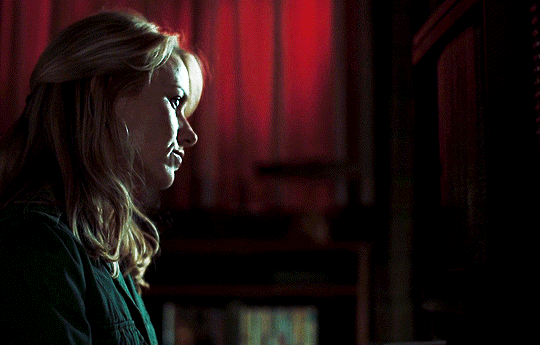
Sure, each corner of the world brings its own flair to the genre, but it’s a very specific aesthetic that runs like a piece of thread through Japanese horror, weaving together the cloak of Asian horror.
And it was the British winter weather that reminded me of this aesthetic (and had me emotionally prepared to see a clump of black hair snake around my hand and upvote a Teen Mom 2 meme on Reddit).
So, in true Paranormal Periodical fashion, I’ve decided to dig deep into the reality of a horror icon native to Japan:
Samara, the creepy-ass chick from The Ring (2002).
Check out the trailer to her cinematic debut here!
But the thing is, the true story behind one of the most famous horror movies of all time goes much further than any ol’ cursed videotape.
Turns out that Samara’s life - and afterlife - is based on a very real story, and a very real set of ghosts that Japanese culture cannot get enough of.
Yep.
This means that there’s twice as much chance that The Ring is based on a true story than any other horror film. Great.
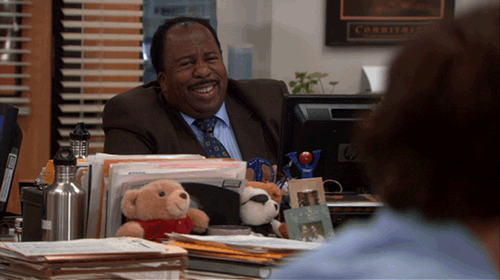
So, for all of the readers that haven’t hidden under their duvet, this article is going to be summarising the true story behind Samara, the Japanese folklore of the Yurei (imagine multiple Samaras just, like, existing all at the same time), and all of the cursed videos that bring us uncomfortably close to the plotline of The Ring.
And if that wasn’t enough to traumatise you, I’ve even included all of the cursed horror films you need to know about!
Why? ‘Cause fuck you.
If I’m going down, you’re going down with me.
Now, let’s get spooky.
First, Let’s Recap Samara’s Screen Time (The Ring Movies And The Ring Novel Series)
Our story starts in 1991.
We are in Tokyo. News breaks that four teenagers have died on exactly the same night at exactly the same time. A journalist piques interest in this suspicious occurrence, and winds up in a holiday resort where they stayed a week before their mysterious deaths.
When he’s not shacked up on the beach and living his Love Island fantasy, he discovers a videotape has been left in the room. This tape contains a set of weird-ass images and a warning appears which basically says:
“You gon’ die in seven days. If y’all don’t wanna die in 7 days do thi-”
An advert cuts off the instructions. (So, just like Love Island, then?)
This plotline sounds familiar, doesn’t it? That’s ‘cause it gets repeated in every novel and every film. But that’s not to say that this saga slacks story-wise.
In the first novel, the investigations lead the journalist to the story of Sadako. Turns out that she was the daughter of Shizuko Yamamura, a medium who was branded a charlatan. Shizuko committed suicide by throwing herself in the crater of Mount Mihara as a result of her disdain by the world around her, but the fate of Sadako was declared unknown.
The journalist follows the trail back to a well. And at the bottom of this well? What’s left of Sadako.

Firmly believing that a proper burial will restore peace to Sadako’s ghost, he believes that laying her body to rest has fulfilled the duty expected of the viewer before the Flat Tummy Tea advert cropped off how to stop her.
But fit with the surprise ending that kills a sidekick of the journalist, we discover that copying the videotape is what spares the watcher of the tape from Sadako’s curse.
Sadako doesn’t want to be laid to rest - she wants the world to know of her suffering and thus by copying the video and showing it to someone, more people will know.
Swap out a couple Japanese destinations for Seattle inspired locations, and we end up with The Ring (2002) - the American film.
Still with me?
Good. Because this is where the Japanese story and the American films diverge:
The American films go off-piece, either churning out this same plot, or go deeper into Samara’s past. This includes seeking out her mother and the child of the journalist being possessed by Samara.
The Japanese, however, shake off such a simple plot and stick to the novels.
Spiral (1995) is the sequel to the first book, from which it is deduced that a tumour is what kills the victims of Sadako. The tumour forms in the throat, and then blocks the airway when the 7 days are up. This tumour is transferred from the tape to the body via an organism known as the Ring Virus.
Investigations continue, questions go unanswered, and then the virus mutates and uses a report on this case to become a medium to transfer the curse to the reader. Some bloke reads it, and begins to think of Sadako and the well. He follows these thoughts to the well, and meets a girl called Masako.
They zig-a-ziga, and he discovers that Masako is actually Sadako.
Oh, and she’s up the duff.

Sadako then makes him publish the files that are essentially now the tape.
The rest of the book series sticks to the growing spread of the virus, and includes a supercomputer project, someone giving birth to Sadako… The Americans only went so far as someone sending a video clip to her next victim!
Yet despite the escalating Japanese side of things, there is something that I need to mention to bring out yet another component of Sadako’s uncomfortably realistic story:
It’s her tragic death.
Having fled to Hakone - the site of the well she died in - to visit her father in hospital, she is raped by a doctor. She defends herself with her psychic powers, but once she is strangled, she is incapacitated and cannot fight back. She is then thrown (still alive) into the well.
Nevertheless, the premise is still clear - and uncomfortably accurate to Japanese folklore and the true story inspiring this set of novels and films.
*Runs away*
The True Story Behind Samara
Now it’s time to discuss the woman of the well herself.
Samara, or Sadako, is the leading lass of these films and novels, and is known for her mop of tangled black hair, her debut appearance in the creepiest cursed video tape known to mankind, and desire for the world to know her name!
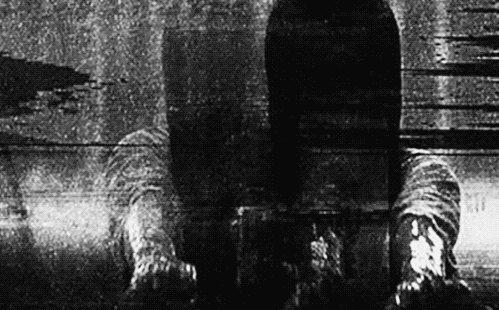
(I’m telling you, this whole saga could just be a metaphor for Love Island.)
But it turns out that this tale is based on a similarly tragic set of events taking place 700 years ago:
It is claimed that a woman named Okiku worked in the dungeon of Himeji castle, and was the servant to a samurai. Among her tasks was looking after a set of 10 golden plates.

In true rom-com fashion, the samurai fell in love with her, and wanted to leave his wife for Okiku. However, in true patriarchy fashion, when she declined his advances he blackmailed her by hiding one of the golden plates and threatening to tell the authorities that she had stolen it.
We are uncertain of the exact events following this, but we know that she either committed suicide by throwing herself in the well, or was murdered by the samurai and then thrown in the well.
Either way she ended up in a well. And this well actually exists…

(Note the iron bars covering the well. To keep her contained, perhaps?)
Well, I say ended up - Okiku made a point of revisiting the samurai after her death. She would haunt him by crawling out of the well each and every night, and would make a point of counting the golden plates. When she found once was missing, she would scream and throw a fit of rage.
If that story wasn’t similar enough to the theatrical version of events, then Okiku’s portrayal as a yurei will be sure to send a shiver down your spine...
The Yurei
Okiku is far from alone in her ventures in the afterlife. In fact, a whole branch of Japanese ghosts bare similarities to her existence.
And they are known as yurei.
Take a look at this gif of Samara:
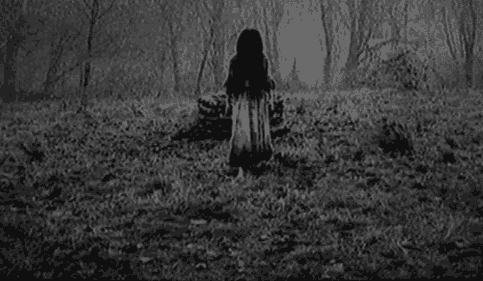
A dark mop of wet, let down hair. A white, flowing dress. Arms outstretched and hands limp.
These are all core traits shared by this #squad of spirits.
The japanese word translates to ‘faint soul’ or ‘dim spirit’, but the main focus of the yurei is actually their burial and afterlife.
Women are buried in Japan in white flowing dresses and have their hair down, hence this aesthetic crossing over to the other plain of existence. Unfortunately, the plain of existence they reach is far from the heavens expected:
The yurei are spirits who are kept from a peaceful afterlife, thanks to the unfortunate nature of their deaths. The yurei are ghosts which have died under unnatural circumstances - think traumatic deaths or having no official rites to bless than during their final moments. Oh, and you can’t forget the burden of jealous feelings and the desire for vengeance!
“So, is sharing round their tragic stories like Samara’s the way to cleanse this spirit?”
Nah.
Performing the rites or resolving the circumstances of their desire for vengeance or their unfinished business typically does the trick.
In fact, letting the ghost have intimate relations with an intended lover is a very popular method of de-yureing your life.
Not willing to shag a spirit?
(Of all the sentences I thought I’d say on this blog, that is definitely not one of them.)
I’m afraid you’re going to have to let the yurei carry out their final actions forever…and ever… and ever…
So, we know what yurei are - but is Okiku the only recorded case of one?
Nope!
In fact, she’s one of three famous yurei that are repeatedly portrayed in theatrical and cinematic productions. Otsuya and Oiwa make up the rest of the trio, but unfortunately I can only find Oiwa’s story.
Well, the terrifying part, that is: anyone that portrays her in a film or at the theatre is sure to be haunted by her!

Currently freaked the fuck out? Here’s how you can spot if you are being haunted by a yurei:
Their appearance is often what gives them away. Aside from the white dress, the hair style is actually key to their aesthetic. It is believed that Japanese women often wore their hair pinned up during their life, and thus had it down for their burial. That or the characters portraying yurei at the theatre would wear wigs, giving the appearance of a cloak of long hair.
Speaking of the white dress, yureis wore white kimonos as this was the symbol of purity, again the traditional garb of buried Japanese women. They would also wear a small piece of cloth to cover their forehead.
(Perhaps explaining why Samara draped her forward and covered her face - and thus her forehead, too.)
“So, they just look like women that have been buried?”
Nearly - they are often seen hovering above the ground, with wisps of colour coming off of their bodies. Also known as hitodemon, these often stick to the colour palette of greens, blues and purples.
These colours feature heavily in the American Ring films.
The Real Cursed Videos You Seriously Shouldn’t Watch
Aside from Samara’s #aesthetic, the main feature of both the novel series and the films is that of the cursed video tape.
Bearing a similarity to a student film from an edgy undergrad, it contains a mix of abstract and hyper-realistic images bound to unsettle the watcher - all set to a soundtrack of high pitched noises.
The tape contains traces of Samara’s life, and is intended to leave a mark on the watcher to encourage them to make the world know of her pain. But being creeped out isn’t the only effect of this tape. Over the week prior to their deadline, weird effects in photographs, bite marks and other physical afflictions are also noted. It's these mental and physical effects that give the real life cursed videos lingering on the net their ‘cursed’ label.
Unfortunately, these effects tend to be much more drastic than those envisaged in The Ring.
*sigh*
#1 - suicidemouse.avi
Mickey Mouse is one of the most iconic cartoon characters to date. His lovable charm and his adorable voice make him the extrovert of the age! However, this video might make you regard the frontman of Disney in a different light.

This video - which first appeared on 4chan - sees a sad looking Mickey walk through a dark, grey city, with hands behind his back.
Things take a turn, however, when a series of creep-AF things go down.
The screen goes blank for a couple of minutes. The piano music stops. The music comes back on. Screams are heard. The music gets fucked up. The buildings around him crumble. He wears an uncomfortable grin as the city falls apart. Mickey collapses with a syringe in his hand.
The final shot shows a blurry logo for the cartoon character, and Russian text appears. It reads:
“The sights of hell bring its viewers back in.”
It is claimed that after a single watch you will experience panic attacks and suicidal thoughts.
Could it have simply come from a troll on the web? Potentially. But the urban legend follows a much darker tale, claiming film critic Leonard Maltin was reviewing old cartoons that would be brought into a compilation when he saw this one. He voted it out immediately, and actually left the room thanks to the video.
But it is also claimed her kept a version for his own records.
Oh! And it gets worse!
The original editor was supposedly driven to insanity having watched it, stealing a security guard’s gun and shooting himself having yelled “Real suffering is not known!”.
Yeah, fuck this shit.
#2 - The Japanese Kleenex Advert (1980s?)
The Japanese film industry makes yet another feature on this list, and once again, it's the traumatising stuff that puts them on the map.
The advert shows a woman sitting next to a baby painted as a red ogre who sits on a pile of straw. If that wasn’t weird enough, music with the innovative lyrics “die” in German repeatedly being chanted is the soundtrack to this freaky advert.
Well, depending on the time of day, that is. The soundtrack would alter depending on when it was viewed.
Viewers also noted an unsettling feeling whilst watching the advert, some even complained of sudden intense suicidal thoughts. The advert was quickly pulled from air thanks to the complaints, but not before it could take its toll on the creators of the advert.
Unexplainable accidents and a series of mental health issues plagued the creators of the film, leaving both viewers and producers haunted. The baby in the video? Killed in a car crash. The actress in the video? Hung herself in a mental hospital.
#4 - The Grifter
Potentially the scariest video on this list, the Grifter is a collage of images and clips relating to human torture, sacrifice and a variety of other gruesome scenes. Splash on some unsettling music and you have yourself a 4chan icon!
The thing is, only screenshots have been shared of this video. All we know is based on the whispers and wonders of the internet pit that is this website. This includes a clip of a rotting plant with the words “Your race is the one dying”, writhing maggots, paintings melting, flashing colours, random forests, text in different languages...
“Hold up - doesn’t this sound like all supposedly cursed videos?”
The images of a very realistic looking baby/doll set this apart from the other videos (dis)gracing this list. Well, that and the supposed subliminal messages people claim to be lingering on the frequencies in the music.
A very clear message is laid out to viewers, however, when a voice says:
“This child (now a young man) is still alive and lives in a local shelter whose name was not given. He never spoke, and still is katatonie [sic].”
We then once again return to the parallels with the other videos:
Negative physical effects and internal afflictions are frequently noted by viewers; sudden nosebleeds, nightmares, hallucinations, depression and suicidal thoughts haunt anyone who dares watch.
Fancy clickin’ ‘play’? Good luck with that. Any clips found on any corner of the web are often taken down, and are near impossible to copy.

#5 - Satan’s Sphinx
Most of the videos have been traced back to 4chan, and have left us with much speculation regarding their backstory. But the urban legend accompanying this video starts with its creation:
It was supposedly uploaded to the internet in 2006 by the US government in order to test subliminal messaging. But when the reports of madness started rolling in, it was taken off the web.
Don’t fancy watching it yourself?
Then you’re missing out on a succession of bloody images overladen with high pitched sounds and murmurs! Eventually the images flick through so quickly that a flash of is all that is left.
So, no, you’re not missing out on much. Apart from depression.
The Real Cursed Movies You Seriously Should Watch (They’re All Great Movies, Okay, It’s Worth The Sacrifice)
Everyone okay? We all good? Had a little cry?
It’s ok, it’s over now.
Now it’s time for the cursed horror movies you can watch!

But before I continue the train of terrifying-shit that is this post, I wanted to begin with a personal story regarding cursed videos: In case you didn’t know, I captured paranormal activity on audio whilst recording a video for my long-dead YT channel. It was when I mentioned the true story of Anneliese Michel that strange occurrences began to plague my sound.
Given that, I firmly believe that discussing the true stories behind certain hauntings is what cursed these films, most of which were based on true stories or unholy themes.
#1 - The Exorcist (1973)
It’s famous for being one of the scariest horror films to date, becoming a cinematic icon that would lead the the horror movie genre forward in terms of both CGI and storyline. But it's also earned its reputation through the claims of a curse.
Fires on set, actors being seriously hurt during filming - and the death of actors whilst the film was barely out of post production - all scar the film. Heck, in 1987, the actress who voiced the demon experienced the curse herself when her son murdered his own family before comitting suicide.
Here’s the trailer:
https://www.youtube.com/watch?v=YDGw1MTEe9k
#2 - The Conjuring (2013)
Both the cast and crew cited paranormal activity, but it was a slash of a claw on Vera Farmiga’s laptop that sparked the rumours of a curse…
Digital claw marks ripped through her laptop and then appeared on her thigh, bearing the mark of a demonic attack or violent spirit.
An exorcist was thus made to be on set throughout filming for the sequel.
Here’s the trailer:
https://www.youtube.com/watch?v=k10ETZ41q5o
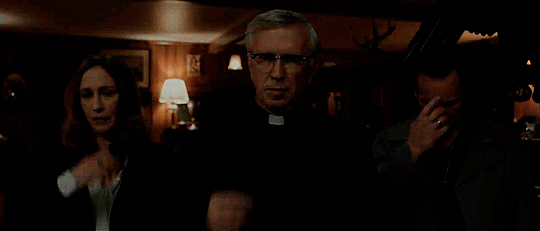
#3 - The Passion Of The Christ (2004)
The presence of Mel Gibson was not the only thing to have cursed this film.
In fact, is was an ungodly amount of lightning strikes that plagued production - even if ‘ungodly’ isn’t the right word to use. In the filming of one scene, lightning struck the set, specifically Caviezel, a key actor in the film. And this was the second lightning strike felt by the assistant director.
Unfortunately, this was one of the few ailments and issues Caviezel would fac including lacerations due to whipping and pneumonia.
Here’s the trailer:
https://www.youtube.com/watch?v=4Aif1qEB_JU
#4 - Rosemary’s Baby (1968)
It’s time for another biblical tale!
The sudden death of the composer and the infamous death of the director’s wife at the hands of Charles Manson have scarred this film. In fact, Manson supposedly cited that he was the devil and doing the devil’s work when he killed her.
A producer also suffered sudden kidney failure soon after the film, amping up the evidence to suggest this film was cursed.
Here’s the trailer:
https://www.youtube.com/watch?v=BjpA6IH_Skc
#5 - Poltergeist (1982)
There’s a lot going on with this film. Like a lot. Like real, human skeletons being used in the pool scene. But that was just the start of this curse.
Unfortunately, this fantastic film has a fatal backstory.
Carol-Anne, the little girl at the centre of the film, died at the age of 12 as a result of a cardiac arrest, and across a mere 6 year window 3 crew and cast members also met their demise.
Here’s the trailer:
https://www.youtube.com/watch?v=9eZgEKjYJqA
#6 - The Omen (1976)
This film certainly racked up the greatest number of tragic occurrences, and this supposed curse is believed to be linked to the film itself.
The plotline follows the birth of the antichrist, and follows his life as he takes out his enemies and seeks to dominate the world.
(Mwahahahaha)
And honestly, it seems like outside of the set this may have just been true:
3 planes carrying both cast and crew ran into dangerous weather conditions. The screenwriter himself was on two separate flights that were struck by lightning, and an executive producer was on a flight that flew through a storm.
Another plane that was supposed to carry Gregory Peck - one of the masterminds behind the film - crashed. Peck had cancelled his ticket moments before deciding to fly.
And the director? His hotel was bombed by the IRA. A special effects artist? His girlfriend was killed in a car crash. Still wanna watch? No thanks.
Here’s the trailer:
https://www.youtube.com/watch?v=sS-sXcx30O4

So - What Do You Think?
Are you planning to watch any of these cursed videos?
Or are you currently googling ‘how-best-to-protect-from-yurei-and-maybe-the-antichrist-too-why-not’?
Whatever your doing this fine evening, you can find more spooky stuff on this blog - including a new ghost everyday. You in? Then hit follow!
#long post#the ring#the ring 2#the ringtwo#the ring 3#the ring imbd#7 days the ring#the ring original#the grudge#ju on: the grudge#scary movie#Best horror movies 2019#horror movies 2019#best horror movies#scary movie 2#horror movies on netflix#good horror movies#classic horror movies#cursed film#cursed video tapes#cursed youtube#cursed films#the exorcism of emily rose#poltergeist#the omen#rosemary's baby#based on a true story#based on real events#the curse of la llorona#scary youtube
31 notes
·
View notes